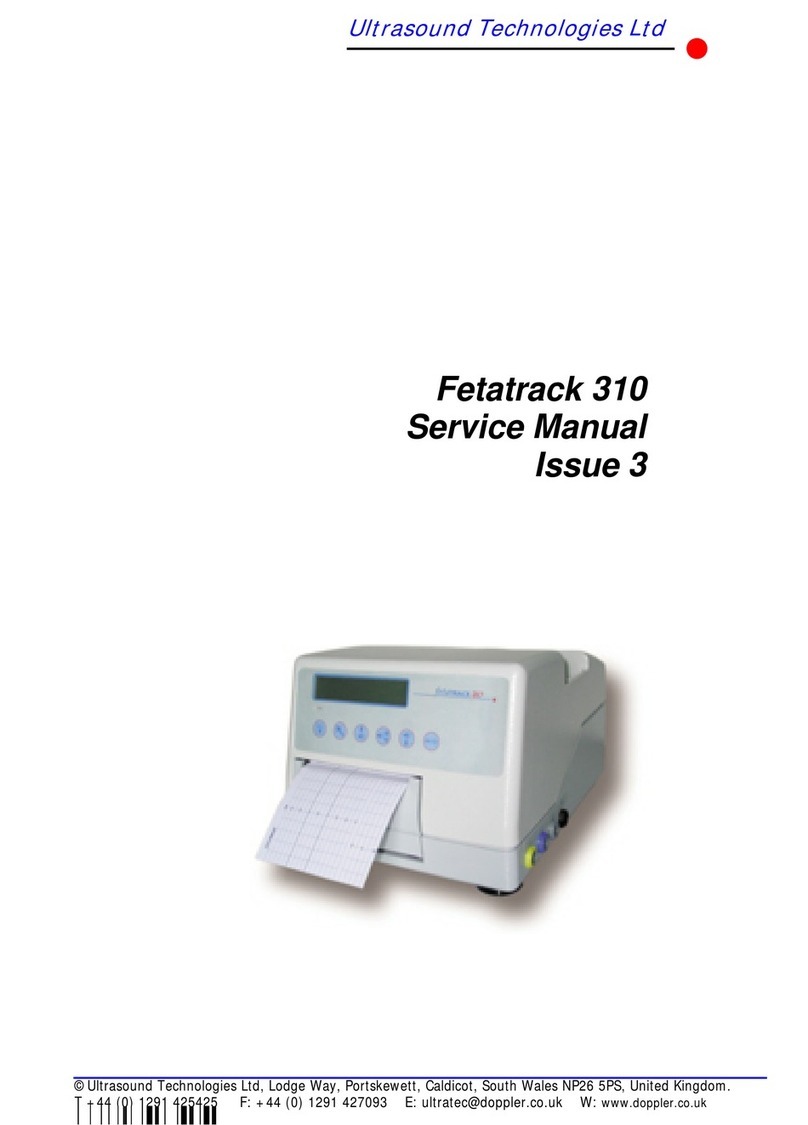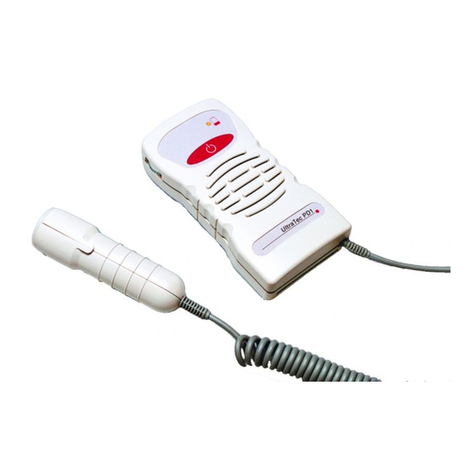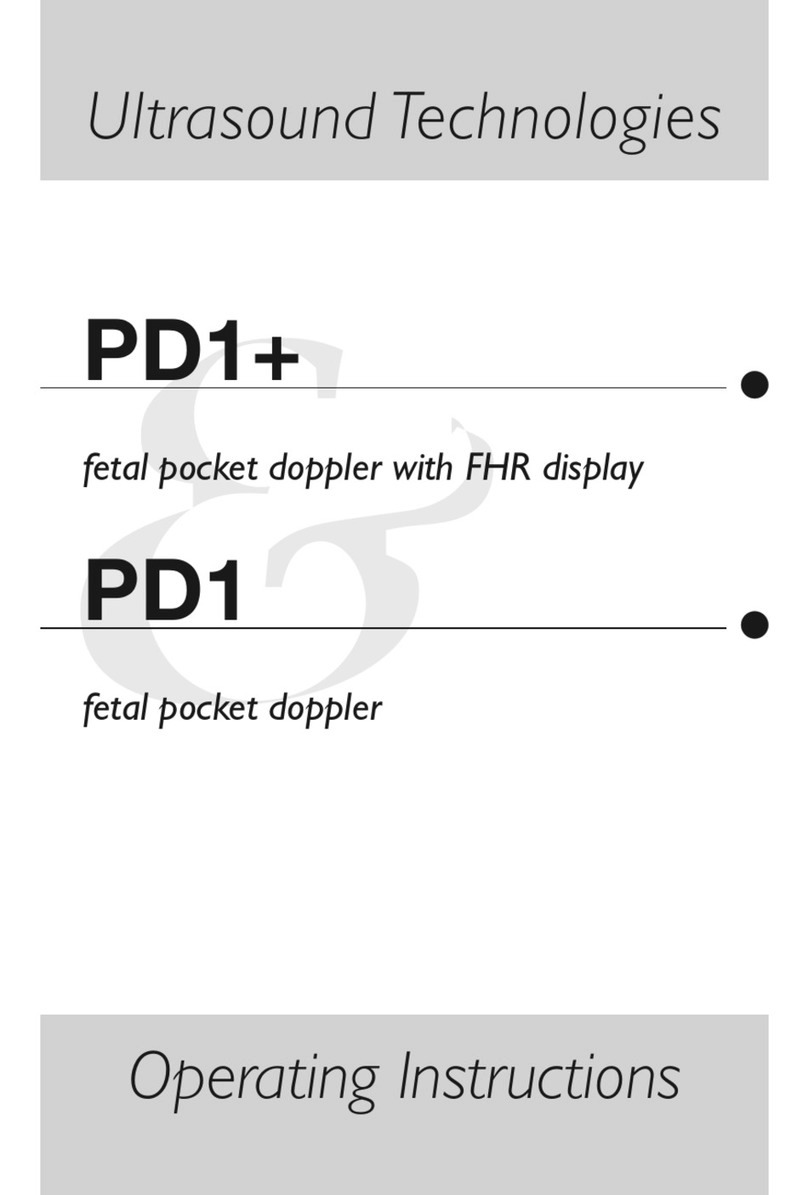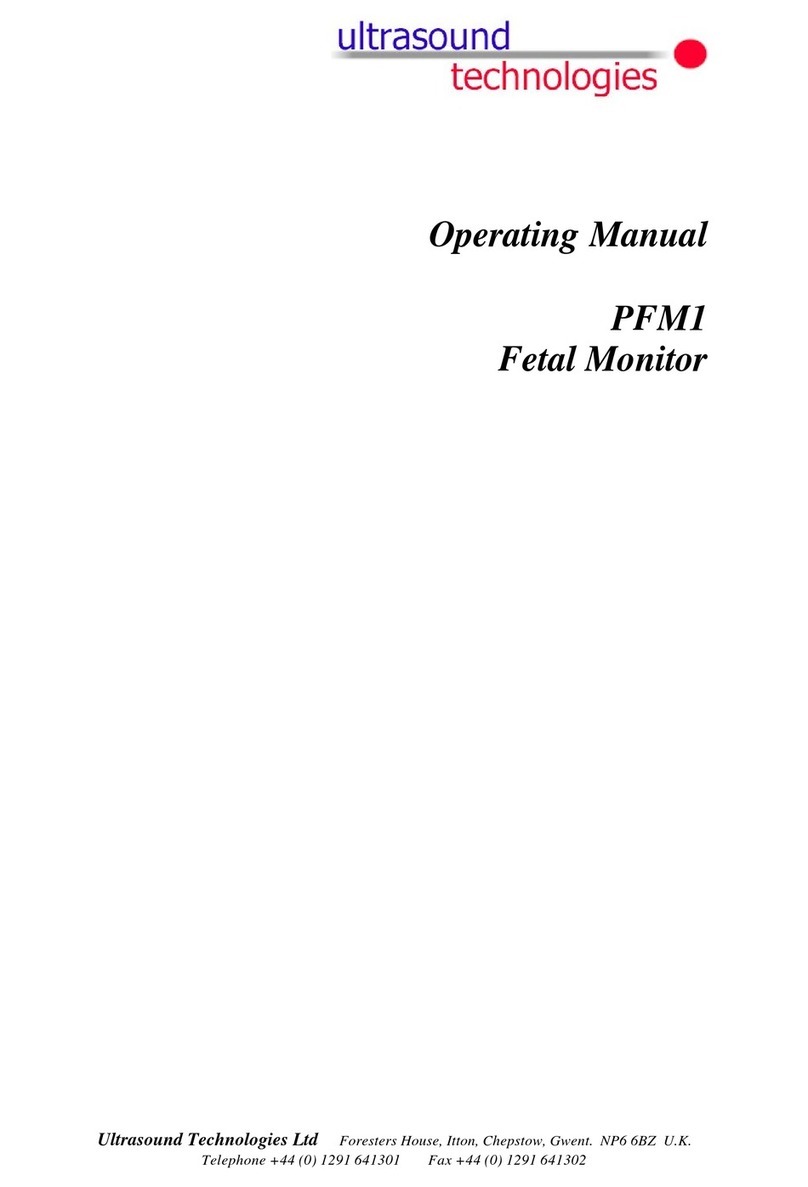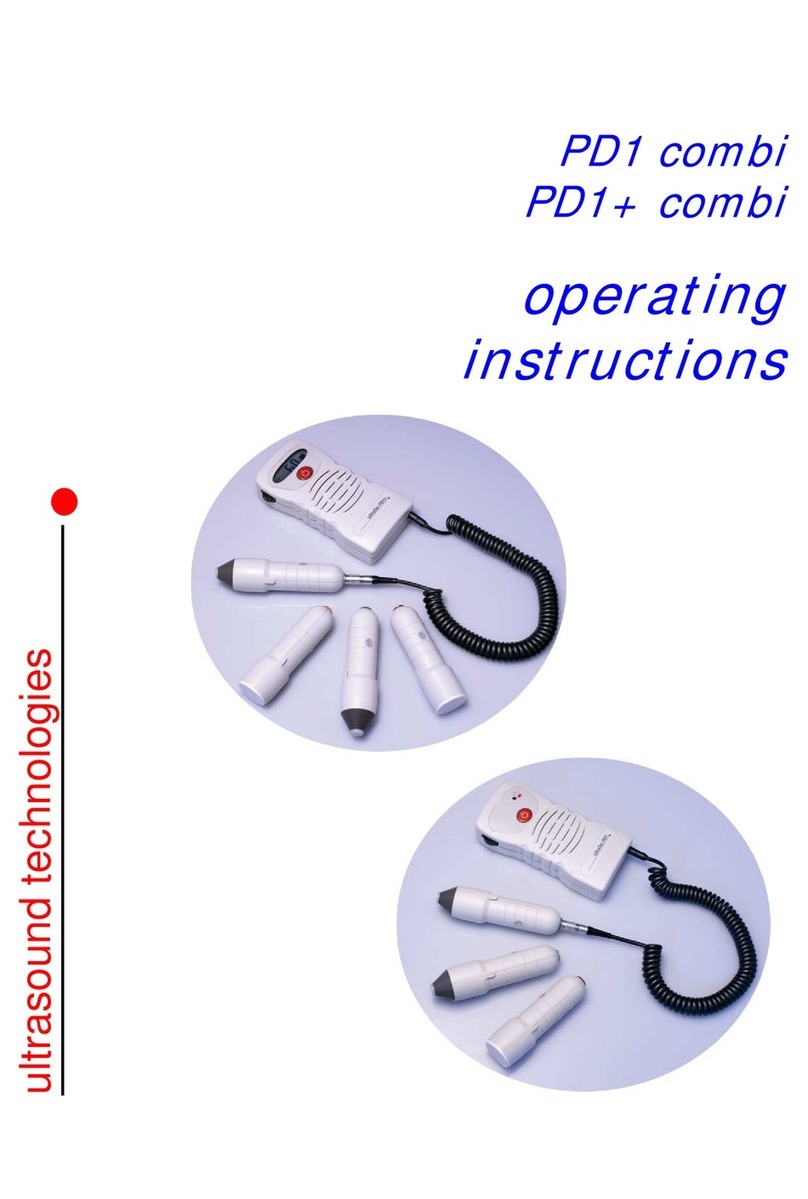
6
Freeplay FHRM Operating Instructions Copyright © UTL. 2018
The FHRM Fetal Doppler is a screening tool to aid the healthcare professional and
should be used in conjunction with normal fetal monitoring. If there is doubt as to
the result obtained by using the unit, further investigations should be undertaken
immediately using alternative techniques.
We would recommend that to maintain the standard of performance of the FHRM,
whenever possible, the device is included in a scheduled maintenance scheme (see
section 10 for details).
Fluids should not be allowed to enter the device as this may result in damage to the
system.
Do not use the device if there is damage to either the probe or probe cable.
The FHRM contains no user servicable parts, all service requirements should be
referred to your local distributor or authorised Freeplay Representative.
The FHRM contains a rechargable NiMH battery pack that is not user replaceable.
Attempts to replace this battery pack could lead to damage to the unit,
environment and/or human health in incorrectly fitted, handled or disposed of
improperly.
The FHRM battery pack must only be replaced by your local distributor or
authorised Freeplay Representative.
WARNING: No modification of this equipment is allowed.
WARNING: FHRM Fetal Dopplers are not to be used in the presence of flammable
anaesthetics, flammable gases or in an oxygen rich environment.
WARNING: US Federal Law restricts this device for sale on or by order of a physician.
3.1 Prudent Use Statement
The FHRM has been designed to minimise the ultrasound exposure to the
patient. It is recommended that exposure to ultrasound should be kept As Low
As Reasonably Acheivable (ALARA guidelines). Avoid unnecessary prolonged
exposure. This is considered to be good practice and should be observed at all
times.
3. SAFETY
